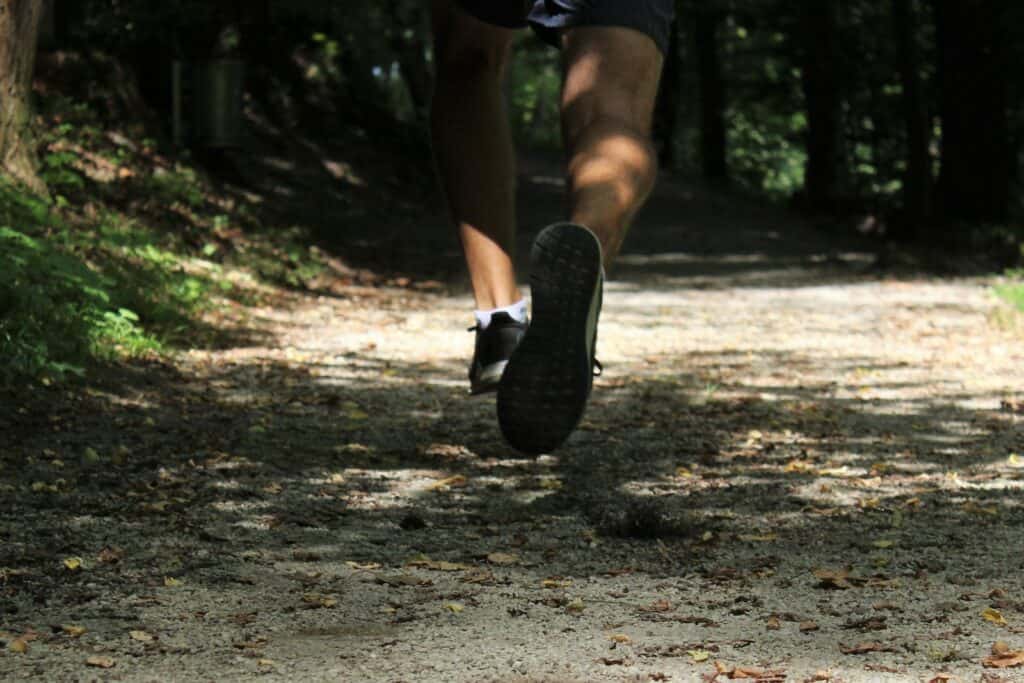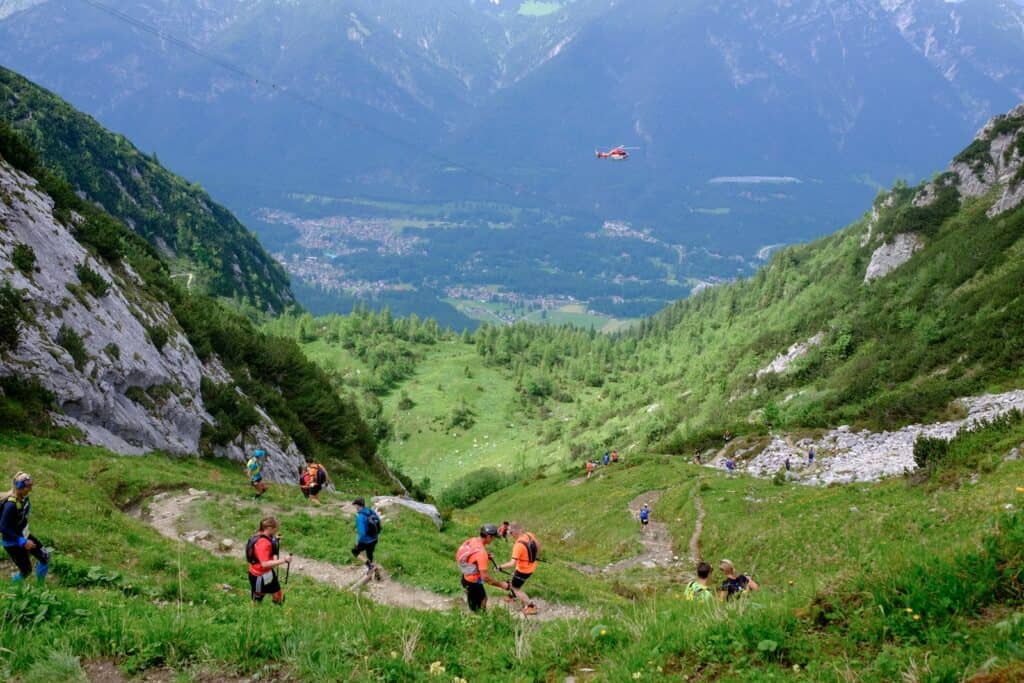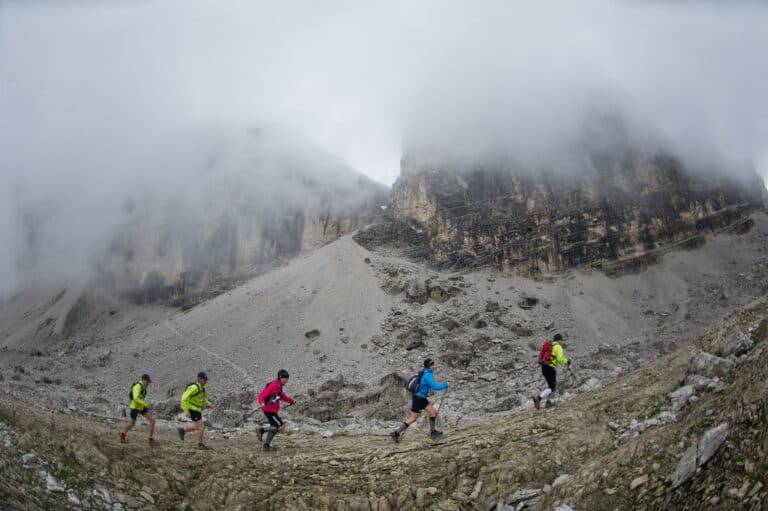If you enjoy trail running, exploring different altitudes can provide a unique and challenging experience. Trail running in different altitudes, such as in the mountains or at elevated locations, presents several factors that can impact your performance. The main difference you’ll notice is the decrease in air pressure and oxygen levels compared to sea level. At higher elevations, there is less oxygen available for your working muscles, making each breath require extra effort.
When you run at high altitudes, your body’s ability to adapt becomes crucial. Your red blood cell count naturally increases over time when exposed to high elevations. This increase helps transport oxygen more efficiently throughout your body during exercise. However, it takes a few weeks for this adaptation process to occur fully.
Altitude training has become popular among elite athletes due to its potential positive effects on performance. By training at higher elevations and then competing at lower altitudes or sea level, athletes aim to take advantage of their improved oxygen-carrying capacity while reducing the negative impact of lower oxygen levels during races.
Altitude and its Impact on Trail Running

When it comes to trail running, the altitude at which you train and race can have a significant impact on your performance. Running at different altitudes presents unique challenges and opportunities that every trail runner should be aware of. Here’s what you need to know about how altitude affects your body during trail running:
1. Oxygen levels decrease with higher altitudes
As you ascend to higher elevations, the air becomes thinner, resulting in less oxygen available for your working muscles. At high altitudes, there is lower air pressure and therefore less oxygen compared to sea level.
2. Increased red blood cell count
To compensate for the lower oxygen levels at high altitudes, your body produces more red blood cells. These cells are responsible for transporting oxygen from your lungs to your muscles. The increase in red blood cells helps improve oxygen delivery and endurance during trail running.
3. Acute Mountain Sickness (AMS)
One potential side effect of rapid exposure to high altitudes is acute mountain sickness (AMS). Symptoms can range from mild headaches and fatigue to more severe nausea and shortness of breath. It’s important to acclimate slowly when transitioning to higher elevations.
4. Altitude adaptation takes time
Your body needs time to adapt to high elevations before performing at its best. For most people, it takes a few weeks for the necessary physiological changes to occur, allowing them to perform optimally at higher altitudes.
5. Performance may be affected initially
When first transitioning from normal altitudes to high altitudes, you may experience a decrease in overall performance due to reduced oxygen availability and increased effort required by the body.
6. Altitude training benefits
Despite the initial challenges, training at higher altitudes can offer several advantages for trail runners:
- Improved aerobic capacity: Training in low-oxygen environments stimulates adaptations that enhance your body’s ability to utilize oxygen more efficiently.
- Increased red blood cell production: The higher altitude stimulates the production of more red blood cells, leading to improved endurance and performance.
- Mental resilience: Training in challenging conditions builds mental toughness, preparing you for race day.
7. Adjusting pace and effort
When trail running at high altitudes, it’s essential to adjust your pace and effort level. Accept that you may need to run at a slower pace initially due to the lack of oxygen and increased effort required. Listen to your body and make adjustments accordingly.
8. Hydration is crucial
At higher altitudes, the air tends to be drier, so it’s important to stay hydrated. Drink plenty of water or electrolyte-rich fluids during your runs as elevated altitudes can cause increased moisture loss through respiration.
9. Altitude-specific training
To prepare for races held at high altitudes, consider incorporating specific altitude training into your regimen. This can include training camps or spending time in higher elevations prior to the race start.
Understanding how altitude affects trail running allows you to adapt your training plan accordingly and optimize performance on race day. Embrace the challenges that come with different altitudes and use them as an opportunity for growth as a trail runner.
Training Tips for High-Altitude Trail Running
When it comes to trail running in different altitudes, training appropriately is key to ensuring a successful and enjoyable experience. Running at high altitudes presents unique challenges due to the lower oxygen levels and reduced air pressure. Here are some tips to help you prepare for high-altitude trail running:

- Gradual Acclimatization: Give your body time to adjust to higher elevations by gradually increasing your exposure to altitude. Start with shorter runs at lower altitudes and gradually build up over time.
- Train at Higher Elevations: Incorporate training sessions at higher altitudes into your routine, if possible. This will help your body adapt to the lower oxygen levels and increase red blood cell production.
- Hydration is Key: Stay hydrated before, during, and after your runs. At higher altitudes, you may lose more moisture through respiration due to the drier air. Drink plenty of fluids throughout the day.
- Slow Down Your Pace: Accept that running at high altitudes may require a slower pace than what you’re used to at sea level or normal altitudes. Focus on effort rather than pace and listen to your body’s signals.
- Strength Training: Include strength training exercises in your routine to improve muscular endurance and stability on technical trails often found in high-altitude environments.
- Altitude Adaptation Camps: Consider attending altitude adaptation camps or training camps located at higher elevations where you can acclimate under expert guidance.
- Heat Training: Incorporate heat training into your regimen as it can simulate some of the physiological adaptations associated with high altitude running.
- Sleep Quality Matters: Ensure adequate restful sleep as poor sleep quality can hinder performance and recovery at higher elevations.
- Listen To Your Body: Pay attention to any signs of altitude sickness such as headaches, nausea, or dizziness. If you experience severe symptoms, descend to lower altitudes and seek medical attention if necessary.
Trail Running Gear for Different Altitudes

When trail running in different altitudes, it’s important to consider the unique challenges and conditions that come with higher elevations. The air pressure decreases as you gain altitude, resulting in less oxygen available for your working muscles. This can have a significant impact on your performance and overall experience. Here are some key considerations for selecting the right gear:
- Trail Running Shoes: Opt for shoes with good traction and stability, especially if you’ll be tackling technical trails or encountering elevation changes. Look for shoes that offer proper support and cushioning to help reduce the strain on your body.
- Clothing Layers: Dressing appropriately is crucial when running in high altitudes where temperatures can vary greatly throughout the day. Layering allows you to adjust your clothing as needed to regulate body temperature and protect against harsh weather conditions.
- Hydration Systems: Staying hydrated is essential at any altitude, but it becomes even more critical when trail running at higher elevations where moisture evaporates faster due to lower air pressure. Consider using hydration packs or belts that allow easy access to water or sports drinks during your runs.
- Altitude Training Mask: Some athletes find value in using altitude training masks during their preparation for high-altitude races or events. These masks simulate the reduced oxygen levels experienced at higher elevations, helping improve lung capacity and endurance over time.
- GPS Watch/Altitude Tracker: Monitoring your elevation during trail runs can provide valuable insights into how different altitudes affect your pace, heart rate, and overall performance. Consider investing in a GPS watch or altitude tracker to track these metrics accurately.
- Sunglasses/Hat/Sunscreen: At higher altitudes, exposure to UV rays increases due to thinner atmosphere and less protection from the sun’s harmful rays. Protect yourself by wearing sunglasses with UV protection, a hat to shield your face and scalp, and applying sunscreen to exposed skin.
- Emergency Gear: When venturing into remote areas or tackling high-altitude trails, it’s crucial to carry emergency supplies such as a first aid kit, trail map, compass, whistle, and extra food and water. These items can be lifesavers in case of unexpected situations or emergencies.
Choosing the Right Trails for Varying Altitudes

When it comes to trail running, tackling different altitudes can bring a whole new level of challenge and excitement. Whether you’re venturing into high mountains or exploring trails at sea level, understanding how altitude affects your body is crucial for a successful and enjoyable experience. In this section, we’ll explore some key considerations when choosing the right trails for varying altitudes.
- Understanding Altitude Effects: As you ascend to higher elevations, the air pressure decreases, resulting in less oxygen available to your working muscles. This drop in oxygen levels can lead to increased heart rate and fatigue. However, spending time at high altitudes can also have positive effects on your body’s ability to adapt through mechanisms such as increased red blood cell production and improved plasma volume.
- Assessing Your Fitness Level: Before embarking on trail runs at different altitudes, it’s essential to assess your overall fitness level and previous experience with altitude adaptation. If you’re a beginner or have limited exposure to higher elevations, starting with lower altitude trails is recommended.
- Gradual Acclimatization: To minimize the risk of altitude sickness such as acute mountain sickness (AMS) or high altitude cerebral edema (HACE), it’s crucial to acclimatize gradually when running at higher altitudes. Give yourself enough time to adjust by spending a few days at intermediate elevations before attempting more challenging high-altitude trails.
- Trail Difficulty: Consider the technicality of the trails you plan to run at various altitudes. Higher elevation routes often come with steeper gradients and more demanding terrain compared to trails closer to sea level. Assess your skill level and choose trails that match your abilities while still providing an engaging challenge.
- Altitude Training Techniques: Incorporating specific training techniques like altitude training or heat training into your regimen can enhance your performance at higher altitudes. Altitude training involves exercising at simulated high altitudes or living in high-altitude locations for extended periods to stimulate adaptation responses in the body.
- Race Preparation: If you’re preparing for a race at a different altitude than your usual training ground, it’s essential to plan your training accordingly. Gradually increase your exposure to higher altitudes during the preparation phase and consider participating in training camps or races held in similar conditions to familiarize yourself with the challenges specific to that altitude.
Remember, everyone responds differently to changes in altitude, so listen to your body and adjust your pace accordingly. With proper planning, gradual acclimatization, and mindful trail selection, you can conquer different altitudes while enjoying the stunning landscapes and exhilarating experiences that trail running has to offer.
- Trail Running And Ankle Strength
- Trail Running And Camping
- Trail Running And Confidence
- Trail Running And Creativity
- Trail Running And Ecotherapy
- Trail Running And Longevity
- Trail Running And Mental Health
- Trail Running And Sun Protection Tips
- Trail Running And Time Efficiency
- Trail Running And Wildlife
- Trail Running At Night
- Trail Running Clothing
- Trail Running Etiquette Dos And Donts
- Trail Running Etiquette With Dogs
- Trail Running For Charity
- Trail Running For Families
- Trail Running For Rehabilitation After Injury
- Trail Running For Stress Relief
- Trail Running For Weight Loss
- Trail Running Gear For Beginners
- Trail Running In Different Altitudes
- Trail Running In Different Weather Conditions
- Trail Running In Remote Locations
- Trail Running On A Budget
- Trail Running Photography
- Trail Running Recovery Techniques
- Trail Running Safety Tips For Beginners
- Trail Running Snacks
- Trail Running Techniques To Boost Your Pace
- Trail Running Tips
- Trail Running With Dogs
- Trail Running With Kids
- Trail Running With Physical Disabilities
- Is Trail Running A Good Workout
- Is Trail Running An Extreme Sport Unraveling The Truth
- Is Trail Running Bad For Your Knees
- Is Trail Running Better Than Road Running
- Is Trail Running Good For Dogs
- Is Trail Running Good For Marathon Training
- Is Trail Running The Same As Cross Country
